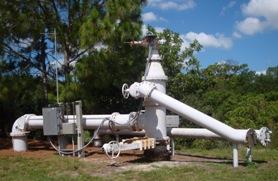

Scholarships in water studies/ research
Feedback 1: 999
999
Feedback 2: 999
999
Feedback 3: 999
999
Feedback 4: 999
999
Feedback 5: 999
999
Feedback 6: 999
999
Feedback 7: 999
999
Feedback 8: 999
999
Impact of climate change on Australia's climate drivers and water resources (QMS)
17 Sep 2017
Offered by: University of Tasmania
Scholarship funds: PhD program
Scholarship description
The response of climate variability to climate change forcing is one of the most important issues in climate research. Australia's highly variable climate is influenced by climate drivers such as El Nino - Southern Oscillation (ENSO), the Indian Ocean Dipole (IOD), the Southern Annular Mode (SAM) and the mid-latitude long-wave pattern and related atmospheric blocking. Climate-change induced modifications to the characteristics of these modes may result in significant changes to the variability and extremes in Australia's temperature, rainfall and evaporation. These changes may require substantial adaptation by climate-sensitive sectors such as agriculture, water resources and the urban environment.
Coupled ocean-atmosphere climate models are being used to make predictions of climate change and climate variability. These models explicitly represent climate processes on all timescales, from long-term climate change, through interannual climate variability down to daily weather systems. It is important that we understand how accurately climate models represent these processes in the past in order to gain confidence in their predictions. Where dynamical processes are not modeled well in comparison to observations, there is an opportunity to diagnose the causes and improve the models.
To inform planning and management decisions in climate-sensitive industries, it is imperative that climate models give accurate predictions, and that the level of accuracy is known for climate variables that are of most importance for the sector. For example, in rain-fed agriculture the rainfall distribution during the growing season is just as important as the rainfall total.
The main climate model used in this study will be ACCESS, the Australian Community Climate and Earth-System Simulator. The ability of this model to simulate the key drivers of Australian climate variability will be assessed. Are the model representations of ENSO, IOD, SAM and atmospheric blocking sufficiently accurate? If so, how do these climate modes change as the climate changes? What model deficiencies are revealed by these studies? Is it possible to improve the representation of key climate features in ACCESS?
For many industries in Australia the important climate variables are rainfall, temperature and evaporation, and their variability on daily, monthly, seasonal and annual timescales. The ability of ACCESS to make predictions about these key variables will be assessed. For example, does the model represent accurately the daily distribution of rainfall, and the way in which this varies from year-to-year? How does rainfall variability change due to climate change, and what are the implications for agriculture, water resources and other sectors dependent on climate?
Scholarship location:Australia
More information (external link to the scholarship website)
Source: UTAS.EDU.AU
Latest shared scholarship
PhD Scholarship - Water managementDate: 12-Jan-2021 Location: Brisbane, QLD, AU Company: CSIRO ....
